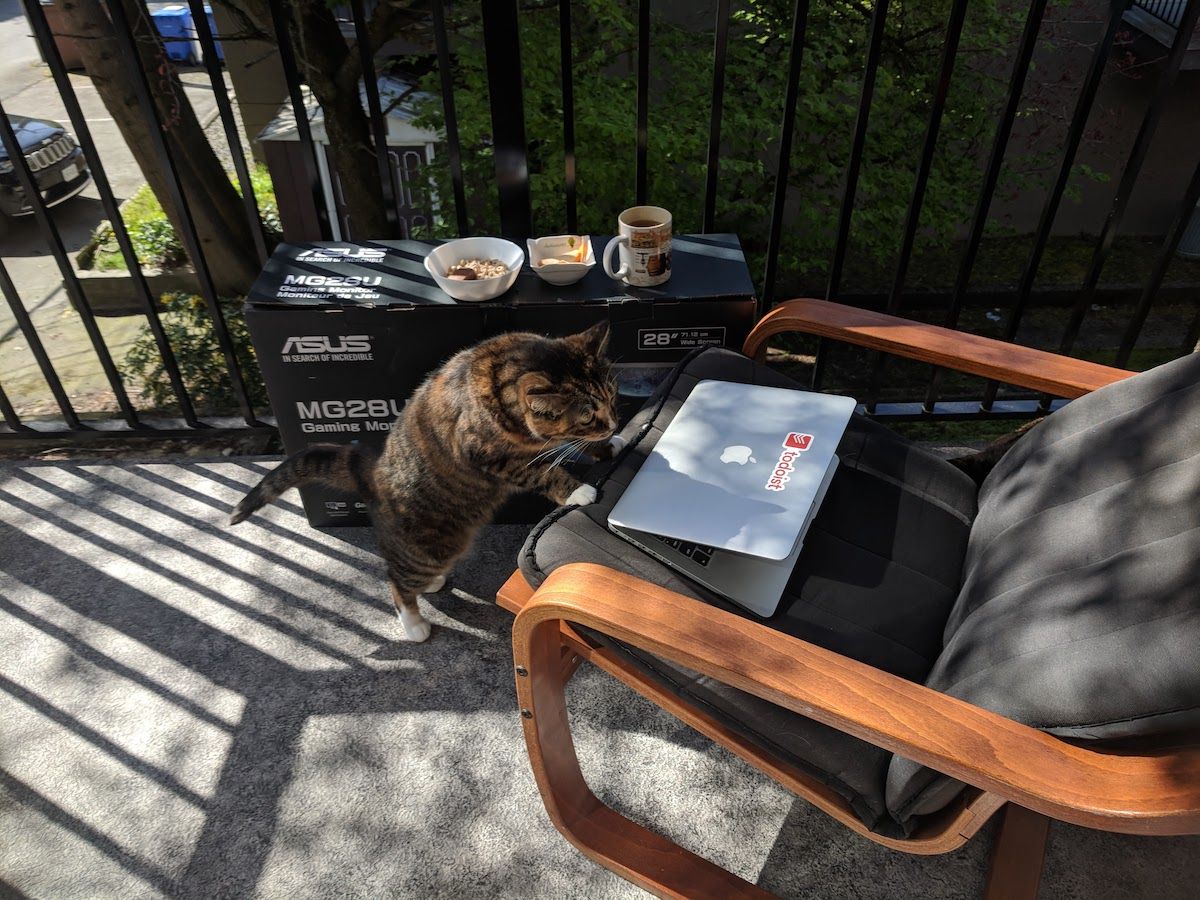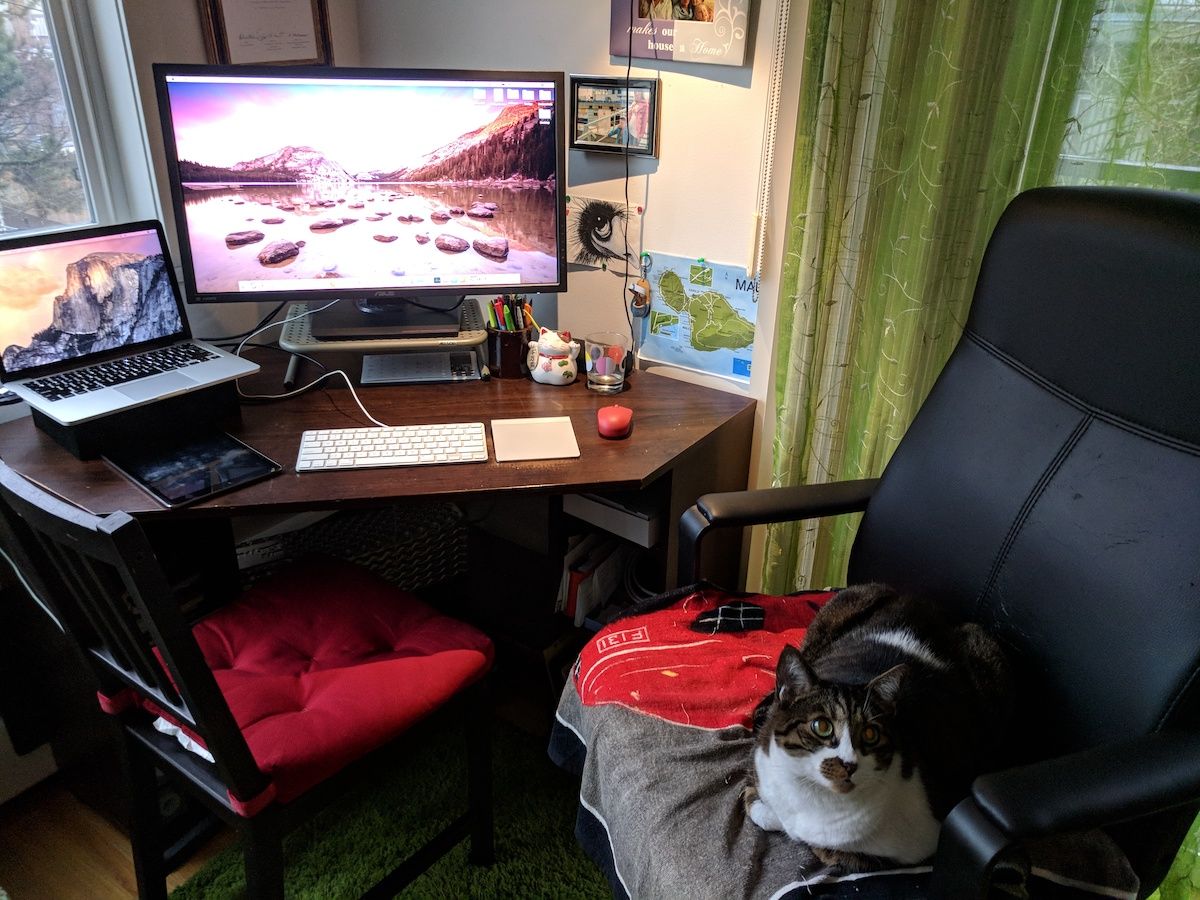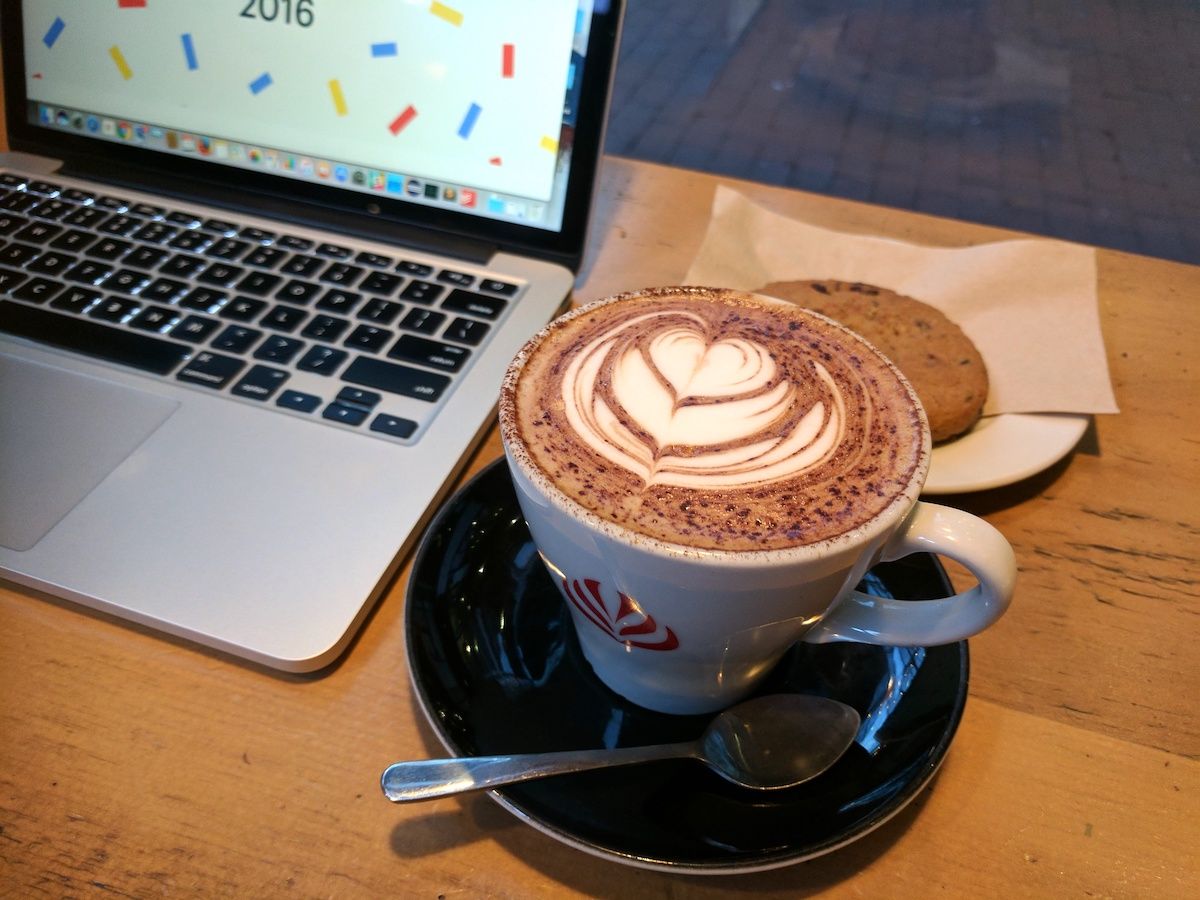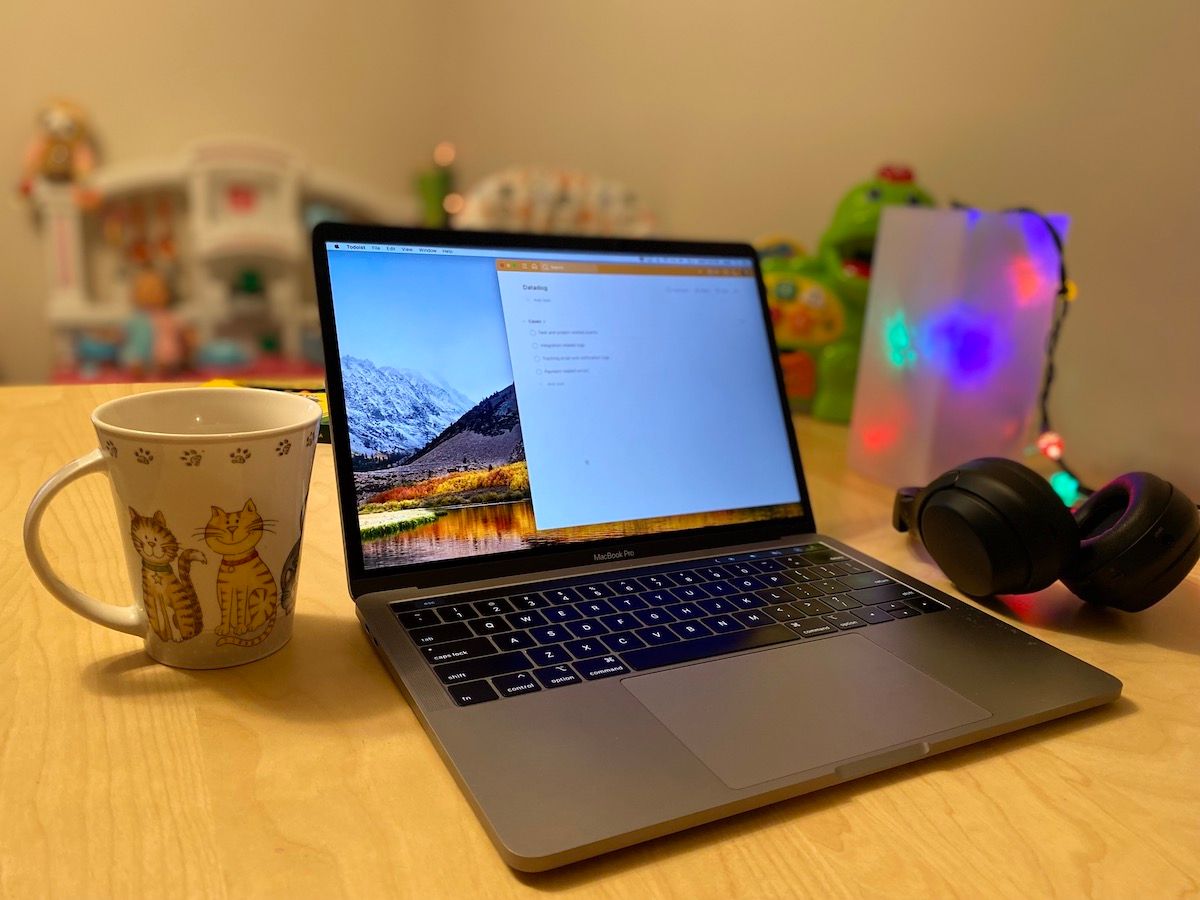💡 Remote working since 2015 and still going strong

The beginning
Manil: So we know each other for almost a decade now. I think when we first met, you may already have been working from home. Is that right? How long have you been working from home?
Galina: In January, it will be my 7-year work anniversary at Doist, a remote-first company, the maker behind the productivity app Todoist and communication platform Twist. It’s been my first (and still ongoing) full-time remote work experience.

Manil: You're very adaptable, getting into remote work and straightaway doing it for 7 years! Tell us more about yourself: who are you? What do you do for work?
Galina: I am a lead on the Customer Support team. My work involves tasks directly related to customer support. For instance, troubleshooting complex technical issues or optimizing our bug reporting system. I also perform leadership tasks where the main focus is making sure we succeed as a team and helping my teammates work efficiently and grow.
Manil: And, outside of work?
Galina: Outside of work, I enjoy outdoor activities such as hiking, camping, and running. Some of my other hobbies are cooking and knitting. As I am now a mom of two (my daughter is 2 and my son is only 3 months old), I don’t have too much time for my personal projects, but it’s on my plan to win it back eventually. My husband also works from home now. When our son is a bit older, we would like to try the digital nomad lifestyle, as we both love travelling and learning about different cultures. Combining it with the possibility to continue working full time would be a dream.
Manil: We'll get to the future shortly! Let's look at your history to start: did you deliberately look for WFH arrangements? Why? Or was WFH unplanned?
Galina: I didn’t deliberately look for a WFH job – it was actually a series of circumstances that led me to where I am now. In 2014, I left my job in Vancouver with no clue that it would be my last in-office job for many upcoming years. Around the same time, my husband got an internship offer in Ottawa.
We ditched our rental place, packed the suitcases (and our two cats), and went to the East Coast for four months. That was when I first started thinking about doing something that wouldn’t be tied to a specific location as I was going back to Vancouver in a few months.
I was looking for small freelance projects to earn some cash and keep myself occupied in a new city. I created a profile on a freelancing platform Elance-oDesk (currently Upwork) and got some translation (my native language is Russian) and voiceover projects right away. I bought a professional mic and used my closet as an audio recording studio as well as learned the basics of audio editing. It was a fun time and a completely new experience for me.
Shortly after, my profile got noticed by someone at Doist. I was hired as a freelance part-time PR representative for the Russian market. I worked only a few hours a week but the more I learned about the company, their products and culture, the more I felt connected with them and really wanted to be part of their story. A couple of months later (when I was already back in Vancouver), they opened a full-time position in Customer Support and suggested that I should apply, which I sure did.
When I accepted the offer, I still couldn’t believe it was real. The idea of having a legit (and meaningful) full-time job, and being allowed to work in pajamas with the cozy cat on my lap seemed quite crazy back then. But soon after I was onboarded, there was no more doubt. It’s legit. It’s real. It’s awesome!
Manil: I agree it's fantastic, and a big part of that is because I found WFH much better for my productivity! I find a busy workplace too distracting, for at least half of the work I do. Despite the upsides, working from home is still, surprisingly, considered unusual.
Galina: It’s not that unusual anymore as thousands of people have switched to WFH since the pandemic started. Many companies are now focused on creating tools and services that help make this transition smooth and successful. But it was indeed very new several years ago when I started.

The (non)routine
Manil: What does your routine look like on a typical work day? What tools do you use?
Galina: Before having kids, I had a somewhat standard workday. It was similar to the one I would have in the office. I would wake up around 7, go for a run, have breakfast while facetiming with my parents (they live in Russia) and then “go” to work. I would always start with reviewing all my tasks for the day and arranging them based on their priority.

I used to take a longer lunch break to go for a walk or grab a coffee in my favorite coffee shop. When I had to run any personal errands in the middle of the day, I would work into the night to make up for that.
It's no surprise that I use the Todoist app as my main productivity tool, both for work and personal stuff. It’s also integrated with Google Calendar so all planned meetings and other events appear in my task list as well. Some study or meditation mode playlist on Spotify often helps me focus. I try not to use my phone when working (except for testing purposes) to avoid any unnecessary distractions. With the team, we use Twist as a communication and collaboration tool. It’s like a virtual office where all conversations from casual talks and discussions to company-wide announcements take place.
For the last two years, my most favorite productivity tool after Todoist has been an espresso machine :)
Manil: Yes, coffee! My partner and I have relied on an Aeropress to start our daily routine for the last few years. You mentioned kids. In a previous job, my teammate joined our squad with a newborn, and had another child within a few years. We talked about the experience daily.
Galina: When my older daughter was born and I got back to work (she turned only 5 months at that time), my work schedule changed drastically.
Imagine working two full-time jobs at the same time when your boss is a baby who wakes up when she wants, starts crying when she likes to and doesn’t care about the dozens of tasks you have to get done. It took me and my husband many months, and many trials and errors, to find a more or less reliable routine that worked for all three of us.
We went through early alarms (I mean 4 am, for instance) to get some work done before our baby woke up, falling asleep right on the floor (as the result of the aforementioned approach), work meetings with the baby on the lap waving her hand to our friendly coworkers… We had to work staggered schedules until our daughter turned two and started going to daycare.
But that newfound freedom didn’t last long-my son was born a few weeks after that. Now we are back to square one and will need to figure out again how to make our routines work in February when I finish my maternity leave.

As much as it’s tough and challenging, I really appreciate this experience of working and parenting simultaneously. It gives me an opportunity to see my kids grow and change without missing their first steps or first words which would’ve happened if I worked long hours in the office, or spent extra hours every day on a commute.
Manil: People often struggle with WFH. What were your own difficulties at first? Did you face unexpected challenges working from home? What do you struggle with now, having had more experience? Some people have trouble with breaks; how do you remind yourself to take breaks?
Galina: My initial struggle was setting a boundary between work and personal life.
When I just started, I was eager to learn everything about my new job and get experience faster. I could easily forget to take a lunch break or often stayed working far beyond my office hours.
However, I quickly realized that balance was key to avoiding burnouts and keeping productivity up in the long run.
I started sticking to a schedule and having specific personal plans (e.g. a climbing gym or a meeting with my friend) for after-work hours. Those gave me a better reason to start and finish on time, as well as take breaks. Although WFH often naturally blends with personal life, it’s still important to draw that line in between so that neither of them suffers.
I find that setting up a dedicated desk that you only use for work, having separate computer environments for work and personal projects, or simply changing clothes for work and home helps switch context and set the right mood.
Manil: Yes, I saw the plants on your desk. And the art on your walls. I feel strongly that small personal touches like that do wonders for balance. I used to keep a Firefox fox plushie by my monitor :-) How does your company approach the challange?
Galina: Our company takes balance very seriously. They encourage you to fully disconnect when outside of your office hours, during weekends and vacations. Our company provides a budget for hardware and software, perks for home office improvements and wellness e.g. healthy snacks or a gym membership.
Some people struggle with the opposite challenge which is to keep committing on the same level. There are dozens of distractions at home calling your attention: your dog begging for a pat, an unfinished cake in the fridge, or that last episode of Netflix show that you are dying to watch. WFH comes with perks and benefits but just so it comes with responsibility and self-discipline.
Even though no one is watching you, everyone will see the results of your commitment.
There is also no ideal recipe for productivity when it comes to WFH. As life changes, we also have to change, adapt, be flexible and open-minded.
My current struggle, for example, is to align my schedule with my productivity pattern. I am an early bird, and I always try to do all deep-focus tasks before the afternoon. But because my schedule is now built around my kids’ schedule, it’s not always possible for me to find that morning time to focus. So I am trying to adapt to whatever options are available to me now and also be open to any new things to try. Video meetings when walking with my baby? Why not?
Manil: Working from home brings challenges with IT. For example, IT departments delegate some tasks to the individual worker, like setting up Wi-Fi networks. What tasks have you taken on that would typically be handled by the IT department, if in a co-located workplace? What useful IT things have you seen companies do for remote workers? How can companies make IT easier for remote workers?
Galina: I guess it very much depends on the type of job and requirements. In my case, I don’t need any specific setup that would require IT support besides internet access. However, to do my job, I have to have access to various online tools and accounts as well as follow some company protocols.
For all of these, we have an internal handbook where every process is documented.
It helps tremendously when we onboard new employees. The handbook serves as a single source of truth for everyone looking for an answer to any work-related question. I believe that in WFH it’s essential to have very well-written and properly maintained internal documentation. Documentation prevents a lot of duplicate work when it comes to setting up a working environment, onboarding people, resolving issues and saving employees’ time.
The future
Manil: What can remote employers do to make their remote team members successful? Any specific examples come to mind? How could a hybrid model (co-located plus remote) compare to fully-distributed (remote only)?
Galina: Trust. It goes a long way. There are still managers out there who believe that to make their employees productive, they always have to have an eye on them and watch their every step. It’s such a fallacy. Instead, you need to hire people who you can trust and who are able to work independently in the first place. From the moment I was hired and up to this day, I feel that my employer and my team fully trust me with the way I work, the time I dedicate to work, and the schedule I choose. It’s the best motivation, and it always makes me want to go the extra mile.
I don’t have any experience with a hybrid model but I imagine it might work for some companies. There is a benefit to meeting coworkers and having discussions in person, for sure. However, if the co-location component is mandatory, a company is limited to hiring only people from a local community.
When you are a fully distributed team, you can select candidates from all around the world with no boundaries at all.
Socialization is the most frequently mentioned missing element in remote work, but it can be achieved today as well.
As people started feeling more isolated and stressed during the pandemic, we started trying new ways to connect with each other online: from virtual coffees and team co-working sessions to interest-based workshops and even virtual fitness classes.
Once a year, we meet each other in person at the retreat which every time takes place in a new location. We already met up in Spain, Iceland, Greece, Chile, and the Azores. It’s currently been postponed due to the COVID-19 restrictions but we can’t wait to see each other again when it gets back to normal. It’s an amazing way to get connected with your teammates and take a lot of great memories to wherever your home is.
Manil: The current state sounds wonderful! Thinking back to earlier when you mentioned practices you'd like to try, what would you change about your workplace? What would be your dream setup?
Galina: I wouldn’t mind a home office with an ocean or mountain view :) Seriously though, for me, a dream setup is when you have all the tools and equipment to do your job efficiently and with as few distractions as possible: a powerful, flawlessly working computer, a comfortable desk and chair, a big high-quality screen that is easier on your eyes (I use an external monitor), and access to all the software you need. Also, if working in a noisy environment (e.g. with kids at home), a pair of good noise-cancelling headphones could be a lifesaver.
Another dream that has come true for me is having flexible hours and not being restricted to any specific location. I can work from anywhere, be it my current home in Burnaby or a tiny town in Russia where I visit my family, or a cozy cafe around the corner.
I am dreaming about a dedicated room for our home office, with lots of natural light and only stuff that we need for work (not mixed with toys and crayons :)) We currently don’t have enough space for that but I hope to implement this once we move to a bigger place.

I also wish I could get back to my “old days” schedule when I could wake up early, go for a run, have a coffee and get most of my tasks done before lunch. This may come true once my son gets older and starts daycare.
Manil: On the subject of lunch, we've come up against the midday break time! And breaks are indeed important. Thank you for sharing your time with us, Galina! Your experience is valuable for anyone working-from-home, whether they are new, or are beginning to have the breadth of experience you have brought to the table.
Thanks to Galina Skovorodnikova for sharing her experience with us through Majorcord's new series, WFH tips. Galina is a Customer Support team lead working remotely for Doist, the remote company behind Todoist & Twist.
Meta
Everything mentioned
- Aeropress
- Deep Work: Rules for Focused Success in a Distracted World
- Doist
- Firefox
- Spotify: I usually browse Spotify and switch between random music depending on my mood. But sometimes I choose ready-to-use playlists like this one for deep focus.
- Todoist
- Twist
- Upwork
